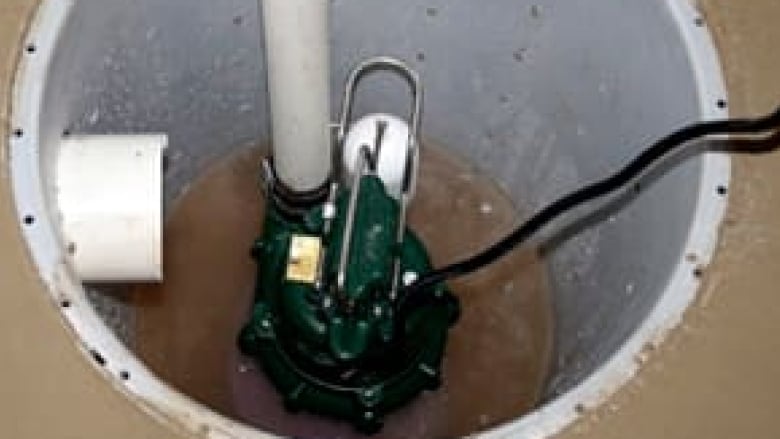Flood Watch: 5 things to know about your sump pump

Water levels are high in the region and Environment Canada is forecasting more rain and snow in the days ahead, which means now is a good time to make sure your home's sump pump is in good working order.
1. Almost all new homes in Ontario have sump pumps
The purpose of the sump pump is to drain the groundwater outside the wall of your basement and keep your basement dry.
Some sump pumps run frequently, while others never run — it depends on the soil around your house, the way the ground around your house is sloped, and the depth of the groundwater in the area.
Homes built prior to the early 1980s may also have sump pumps, but most were built so that the groundwater would drain directly into the sanitary sewer. This is now illegal in almost all places as we want to avoid putting clean water into sanitary sewers. Also, draining groundwater directly into the sewers has been connected to sewer backups during extreme rainfall events.
2. Sump pumps do not work when the power is out
If your power goes out, your sump will not run unless you have a backup power system in place.
Unfortunately, the power is more likely to go out during a storm, which is also the time you need your sump pump the most. As a result, it is essential that you have a backup for your sump pump.
There are two main types of backups: one operates by battery, the other by pressure in your water system. A generator can also be used to provide backup power to your sump pump, if it is installed properly. All plumbing is different, so a plumber can help you determine what is best for your home.
3. Sump pumps need to be maintained
Sump pumps are part of your home's essential equipment, like your furnace or your smoke and carbon monoxide detectors. They need to be regularly checked, operated and maintained to ensure that they are in good working order when you need them.
Like any mechanical device, sump pumps wear over time — parts may rust, seals may leak, and the motor may fail. It's a good idea to ask your plumber how you can maintain your sump pump.
4. It is illegal to discharge groundwater into the sanitary sewer
Your sanitary sewer is provided with an access point (an opening called a "cleanout"), which is usually sealed with a cleanout cap.

Under no circumstances should you remove your cleanout cap to drain the water in your sump pump. This is illegal in most places, and there is a risk that sewer gases could find their way into your home, which can cause unwanted odours and can be very dangerous.
Also, your sump pump should not be pumping into the sanitary sewer, as this is also illegal. A plumber or your municipality can help you determine if this is happening.
5. The costs of sump pump failure
A sump pump failure will cause water to back up into your basement.
The Christmas 2013 ice storm cost property insurers in Canada $225 million in claims, roughly half of which were due to sump pump failures.
The average cost of water damage claims in Canada has increased by 40 per cent over the last ten years.
Barbara Robinson is the president of Norton Engineering in Kitchener